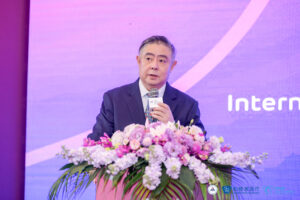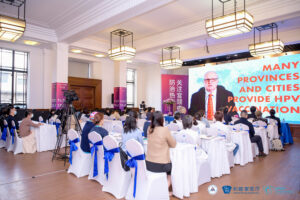Medical Seminar, New International Developments in Cervical Cancer Prevention and Treatment
Cervical cancer is one of the common gynecological malignancies, and it is also the only cancer that can be prevented by early detection and treatment. In November 2020, WHO released the Global Strategy to Accelerate the elimination of Cervical Cancer, with the goal of eliminating cervical cancer by 2030. The launch of this strategy marked the first time in human history that 194 countries in the world have committed to eliminating cervical cancer. In December of the same year, The State Council of China officially released China Support the Global Strategy to Accelerate the Elimination of Cervical Cancer. Therefore, how to help women prevent cervical cancer more effectively, improve the level of cervical cancer prevention, so as to reduce the incidence of cervical cancer has become the domestic and foreign experts in the field of cervical cancer research and exploration.
On November 26, 2022, Beijing United Foundation for China’s Health (UFCH) and United Family Healthcare (UFH), with the support of Shanghai Hospital Association, invited well-known medical scholars and physicians from home and abroad to participate in the medical seminar on cervical cancer prevention and treatment. The conference was held at the future site of UFH’s Jingan Women & Children’s Hospital with a small, in-person gathering and nearly 340,000 online participants. The expert speakers also shared strategies for helping China to meet its cancer elimination goals by 2030.

Roberta Lipson, founder of United Family Healthcare and and Beijing United Foundation for China’s Health welcomed the guests and delivered a welcome speech.

Mr. Zou Hejian, Vice President of Shanghai Hospital Association and Party Secretary of Huashan Hospital Affiliated to Fudan University, delivered a speech.
In recent years, the incidence of cervical cancer has been increasing in China, and has the second highest incidence rate among female malignancies. Persistent high-risk human papillomavirus (HPV) infection is the primary risk factor for cervical cancer. The other important reason is the low coverage rate of HPV/cervical cancer screening in rural areas. The main means to prevent and control cervical cancer is still by early detection and treatment.
The self-sampling, same-day screen and same-day treatment model used by UFCH in the HPV /cervical cancer screen and treatment program is the most effective screening model for large-scale. Models such as this could be strategic in closing the gap to meet the WHO’s strategic target of eliminating cervical cancer by the 2030 target.
The conference also kicked off the HPV/cervical cancer screen and treatment program that will be held in Shanghai on December 1, which is the first time for us to provide public health services for needy women in the city. The target of this screening is mainly grass-roots migrant workers and low-income women in Shanghai. We hope that through this mission, these normally very busy women will have the opportunity to take time out to care for. At the same time, we also want to share with more women information about HPV, the importance of getting tested for HPV, and say “no” to cervical cancer.




